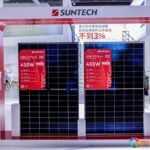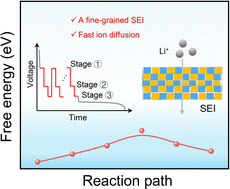Oxygen‐Assisted High‐Temperature Deposition of High‐Efficiency Trigonal Selenium Solar Cells
Advanced Energy Materials, EarlyView.

A novel oxygen-assisted high-temperature deposition strategy enables the fabrication of single-phase, vertically oriented, and highly crystalline trigonal selenium (t-Se) absorber layers. This innovative approach enhances carrier mobility, reduces deep-level defects, and minimizes electrical losses, thereby achieving a certified record efficiency of 7.55% in wide-bandgap trigonal selenium thin-film solar cells.
Abstract
Selenium (Se), the oldest material used in photovoltaic devices, initiated the development of modern solar technology. Trigonal Se (t-Se), the most thermodynamically stable and photoactive phase, exhibits remarkable photoelectric properties. However, achieving high-quality, pure-phase, and well-oriented t-Se films remains a significant challenge due to the high energy barrier for phase transformation and its inherent anisotropy. Here, an oxygen-assisted high-temperature deposition strategy is reported, wherein films are grown at temperatures exceeding the selenium re-sublimation point and under elevated selenium vapor pressure. This approach effectively overcomes the intrinsic thermodynamic limitations, enabling the one-step fabrication of single-phase, highly crystalline, and vertically oriented polycrystalline t-Se absorber layers. The resulting t-Se absorbers exhibit improved carrier transport, reduced deep-level defects, minimized surface potential fluctuations, and enhanced grain boundary properties. These advances significantly reduce electrical losses in t-Se thin film solar cells, leading to a certified efficiency of 7.55%, the highest certified efficiency so far. This work provides a thermodynamically viable route to the growth and application of trigonal Se and other low-dimensional materials.















































































































































